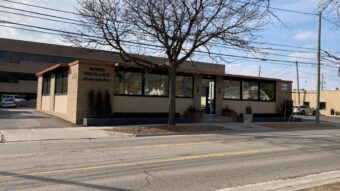Column By Ryan Phillips, director, Transwestern
Amazon found out the hard way this spring that promising one-day delivery of online purchases is not as easy as it sounds. The retailing behemoth garnered some unwanted headlines when it was forced to concede it simply did not have the warehousing infrastructure in place to meet its delivery pledge on Chicago’s South Side. Amazon has since announced plans to rectify the problem, but not before there were some calls for congressional investigations into the matter.
Amazon is not the only “e-tailer” waking up to the daunting reality that fulfilling ambitious delivery promises – a key battle line in the increasingly competitive retail sector – requires not only cutting-edge logistics, but also a warehousing network capable of meeting demand near major population centers. Many of these retailers have found that warehousing space in the final leg of the distribution chain – or “last mile” – is the most challenging to establish.
Surge of Online Retail Accelerates Need for “Last-Mile” Fulfillment Centers
As e-commerce continues to account for a greater share of total retail sales, the situation will only grow more challenging. Many online-only retailers are experiencing rapid growth, while traditional brick-and-mortar stores, including industry giants, are altering their business models to better compete in the online marketplace.
One strategy traditional retailers are employing is the “Domino’s Pizza” model, which is centered on speedy home delivery. Target is now offering free delivery for purchases over $25, while Wal-Mart is trying to aggressively ramp up its online retailing presence in urban areas, especially after the closure of its smaller-format Wal-Mart Express stores. Among the more ambitious goals being pursued by some retailers with a physical storefront is allowing shoppers to place orders for out-of-stock items that can then be delivered to their homes before they arrive.
Brick-and-mortar retailers are also carving out space in their stores for online order pick-up. While most of these items come from nearby warehouses, some retailers have started using store inventory to fulfill orders placed online, a practice that facilitates even faster home delivery for customers who live in the area. Rather than going directly to the end user, warehouse inventory is then used to restock store shelves, maintaining the need for a larger fulfillment center nearby.
The real estate footprint of e-commerce fulfillment centers is only going to grow in complexity in the years ahead. One recent study showed that square footage of warehouse real estate needed for online retailing fulfillment is three times greater than that for traditional stores, where merchandise is delivered in bulk compared to the one-off nature of internet purchasing. The real estate challenge of e-commerce is especially pronounced in larger cities like Chicago, where there are not only high concentrations of online-shopping millennials – many clustered in high-rise residential towers that are dealing with a deluge of deliveries – but also where close-in warehousing space is in short supply.
And while the potential of drone delivery of parcels has garnered a lot of attention, this method is likely to remain long in the offing in dense urban areas, where it will face strict regulatory review.
What Spaces Are Suitable for “Last-Mile” Fulfillment Centers?
The most important features for potential warehousing operations are sufficient clear height ceilings and loading dock infrastructure. As a result, vacant manufacturing buildings are often strong candidates for “last-mile” distribution centers, particularly in dense urban areas with limited land availability. As big-box retailers like Sports Authority and Circuit City go out of business and others look to shrink their real estate footprints, the spaces they leave behind may also be viable candidates for warehousing thanks to their flexible floorplates, ample parking and, in many cases, infill locations.
While distribution centers need not be in city centers, they must be able to access them in 30 minutes or less during non-rush hour periods. Often this means locating along or near major highways. This could present development opportunities for many urban and inner-ring suburban communities that have suffered from de-industrialization and seen little in the way of business investment in recent years. Facilities located in federal Empowerment Zones, distressed areas that offer tax credits and other economic incentives designed to spur investment, may also be prime targets for repurposing. Additional state and local incentives might also be available to help offset the cost of development.
Chicago is an Ideal Test Lab for “Last-Mile” Issues
Online shopping tends to account for a higher share of retail sales in northern cities like Chicago, where long winters drive even more consumer activity to the web and away from brick-and-mortar stores. Because of its easily navigable geography, high population density and abundant industrial inventory, the Windy City is well-positioned to lead the nation in establishing a state-of-the-art “last-mile” warehousing network.
In Chicago, major portions of the South and West sides – which have easy highway access, but where there has been little business activity – could benefit. This is especially true as land and construction costs downtown and on the North Side continue to climb.
As Chicago looks to amend or abolish some of its planned manufacturing districts, officials should consider the city’s future “last-mile” warehousing needs, particularly downtown, where there’s been a surge in high-rise multifamily development. Allowing the remaining centralized industrial space to disappear as demand for same-day and even next-hour delivery continues to grow may well prove to be a major planning headache for Chicago in the near future.



